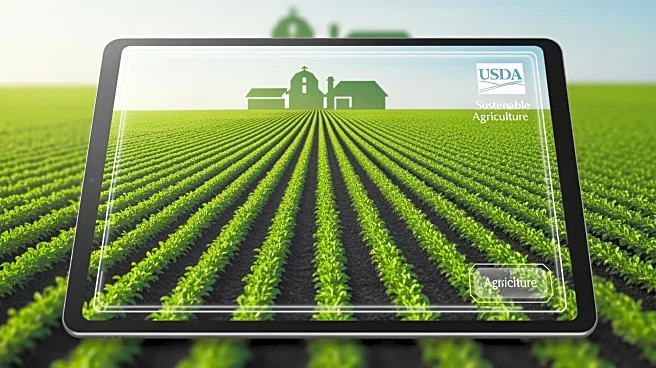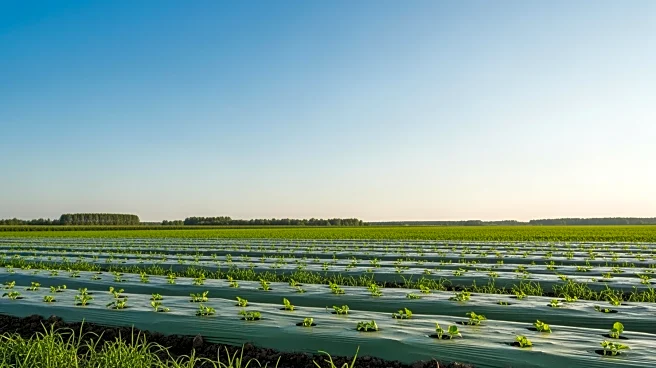What's Happening?
The agricultural commodity markets are experiencing significant volatility as climate change continues to impact global food supplies. Extreme weather events, such as heatwaves, droughts, and floods, are causing disruptions in crop yields and livestock
production, leading to price spikes in essential commodities. This phenomenon, referred to as 'climateflation,' is affecting everything from the cost of basic food items to the financial stability of multinational food corporations. Recent events, such as droughts impacting rice production in the U.S. and soybean harvests in the Midwest, highlight the immediate challenges faced by the agricultural sector. The situation demands urgent attention from policymakers, industry leaders, and consumers to address the growing instability in food systems.
Why It's Important?
The volatility in agricultural commodity markets has far-reaching implications for the U.S. economy and global food security. Companies heavily reliant on agricultural inputs, such as food processors and restaurant chains, face increased production costs, which could lead to higher consumer prices and reduced demand. Conversely, companies specializing in agricultural technology and climate-resilient solutions may benefit from increased demand for their products. The situation underscores the need for innovation and adaptation in agricultural practices to ensure food security and economic stability. The interconnectedness of global markets means that disruptions in one region can have ripple effects worldwide, highlighting the fragility of current food systems.
What's Next?
In the short term, continued volatility in agricultural commodity markets is expected as seasonal weather patterns unfold. Businesses will likely focus on tactical adjustments, such as hedging strategies and supply chain diversification, to mitigate risks. In the long term, a shift towards climate-smart agriculture and sustainable practices will be necessary to build resilience against climate-induced disruptions. This includes adopting drought-resistant crops, precision agriculture technologies, and diversified farming systems. Governments and international bodies will need to develop comprehensive strategies to bolster food security and manage cross-border food trade during crises. The transition to a more stable and resilient food system will require substantial investment, policy commitment, and technological innovation.
Beyond the Headlines
The current challenges in agricultural commodity markets are part of a broader trend of increasing global food insecurity driven by climate change. The reliance on a few staple crops and concentrated production regions makes the global food system vulnerable to localized climate shocks. Regulatory and policy implications are becoming more prominent as governments are pressured to develop strategies for climate adaptation in agriculture. The situation draws parallels to past periods of food price spikes, but the underlying climate drivers are now more pronounced and persistent. The long-term impact on companies will depend on their ability to innovate and invest in climate resilience, with those failing to adapt facing significant financial risks.













